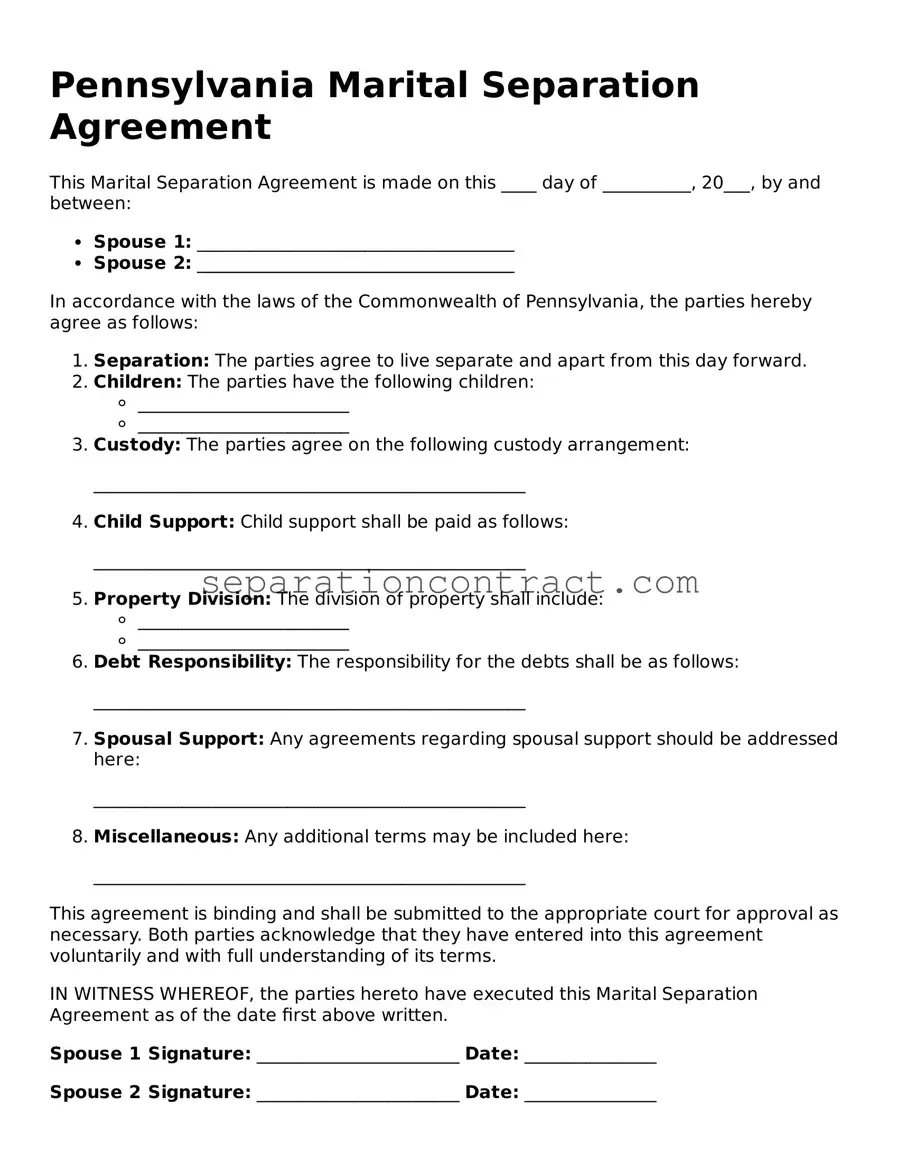When filling out the Pennsylvania Marital Separation Agreement form, individuals often make several common mistakes. One frequent error is failing to provide complete information. This includes not filling in all required fields, which can lead to delays in processing the agreement. It is essential to ensure that names, addresses, and other pertinent details are accurately entered.
Another mistake involves misunderstanding the terms of the agreement. Some individuals may not fully grasp what they are agreeing to, which can result in unintended consequences later. It is advisable to read the document carefully and seek clarification on any points that are unclear.
People sometimes overlook the need for signatures. An agreement that is not signed by both parties is not valid. Each party must sign and date the form to indicate their consent to the terms outlined in the agreement.
Additionally, individuals may neglect to include specific details about asset division. Without clear descriptions of how property and debts will be divided, disputes may arise in the future. It is important to be thorough and precise in this section of the form.
Many also fail to consider the implications of child custody and support. If children are involved, the agreement should address these issues clearly. Omitting this information can lead to complications and misunderstandings regarding parental responsibilities.
Another common error is not updating the agreement if circumstances change. Life events, such as job changes or relocations, can affect the terms of the separation. Regularly reviewing and amending the agreement as needed is crucial to ensure it remains relevant.
Finally, individuals might not keep copies of the completed agreement. It is important to retain a copy for personal records and to provide one to the other party. This can help prevent disputes and ensure that both parties have access to the same information.
